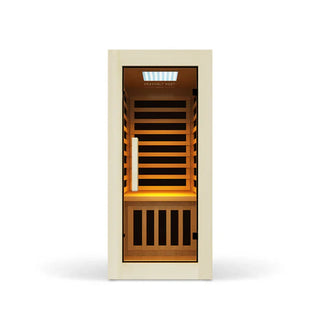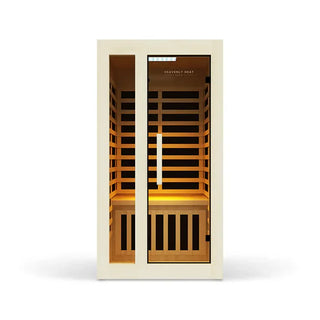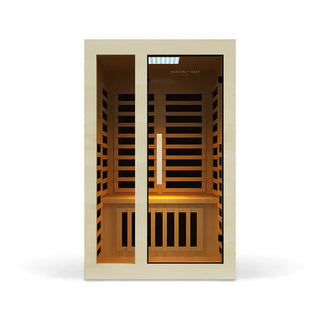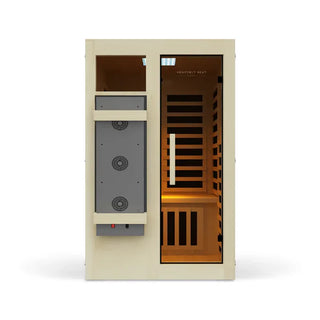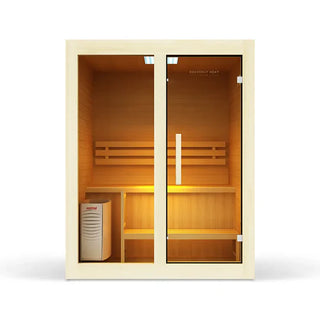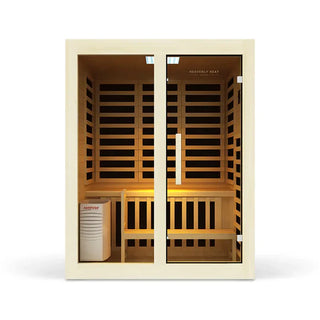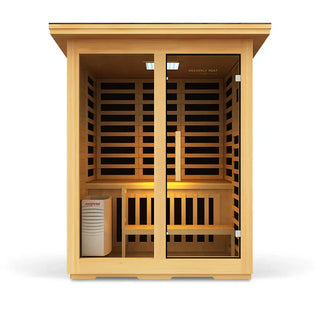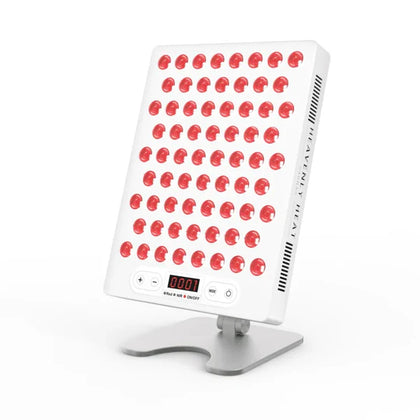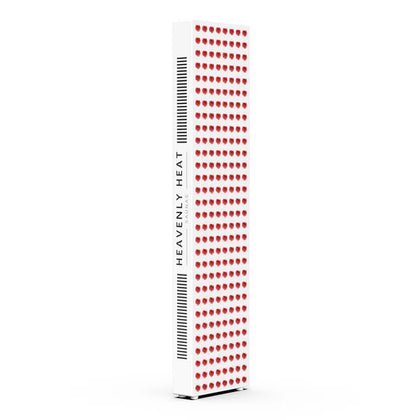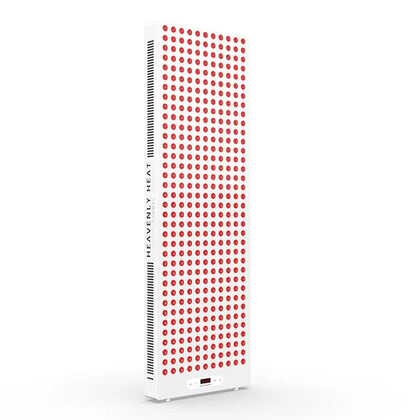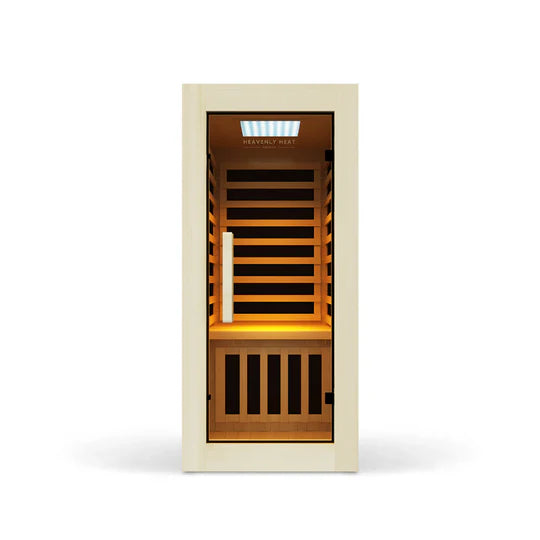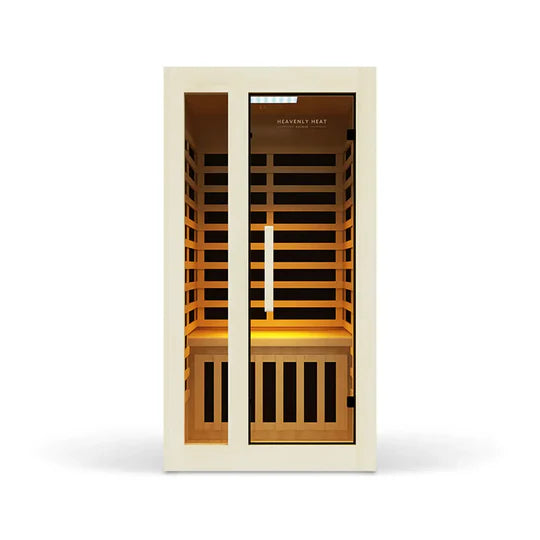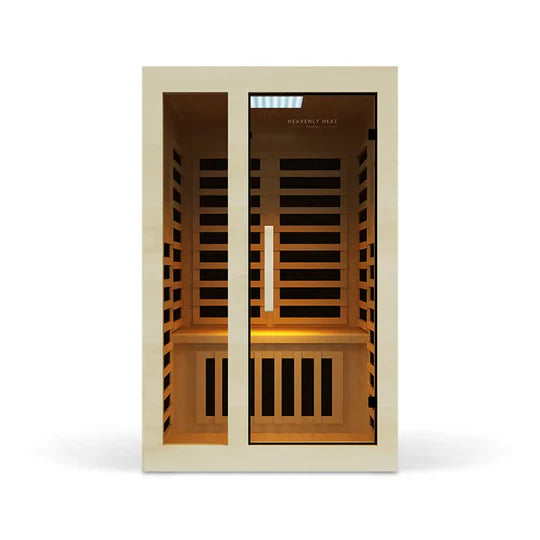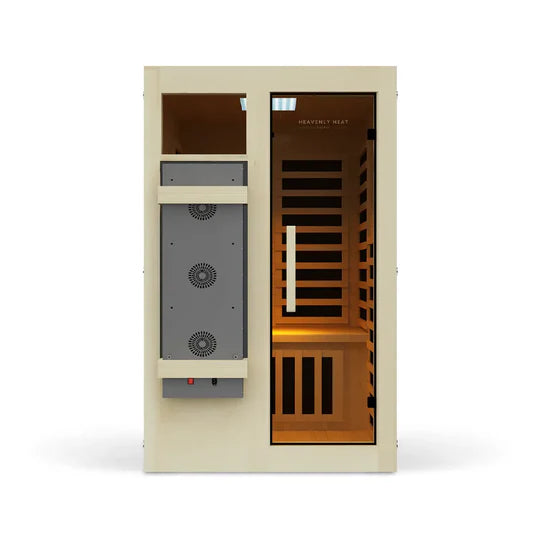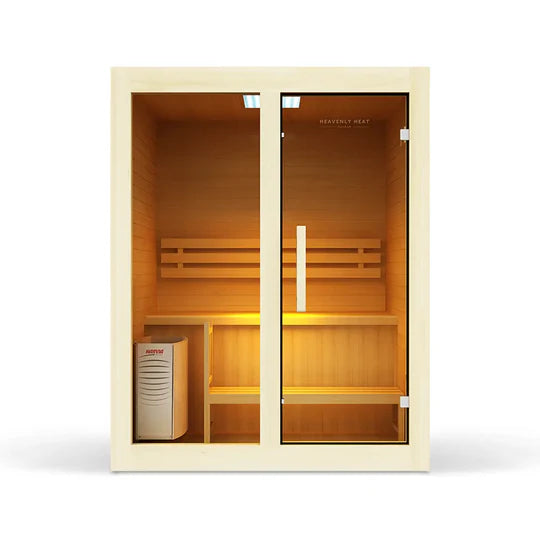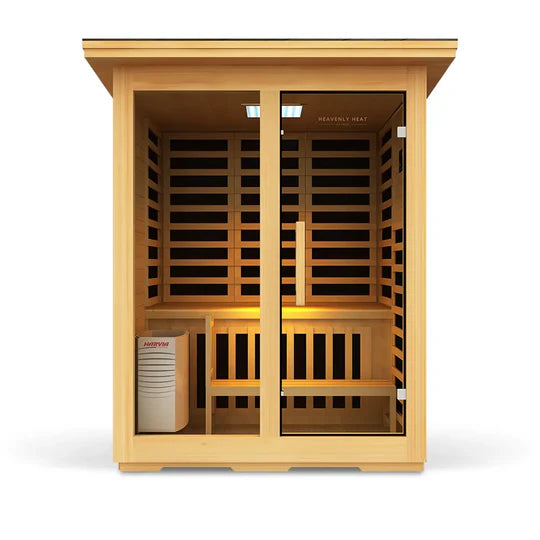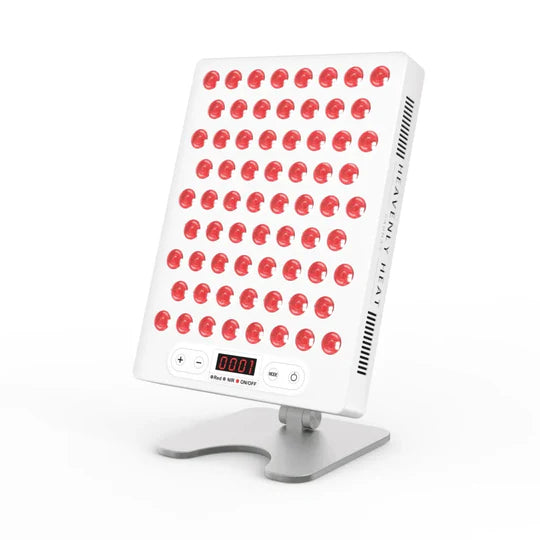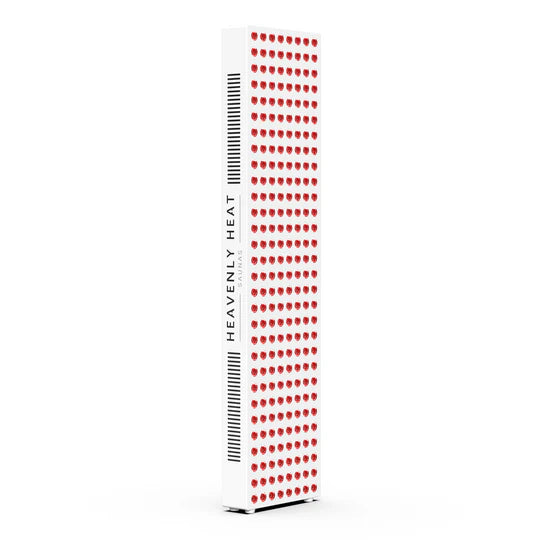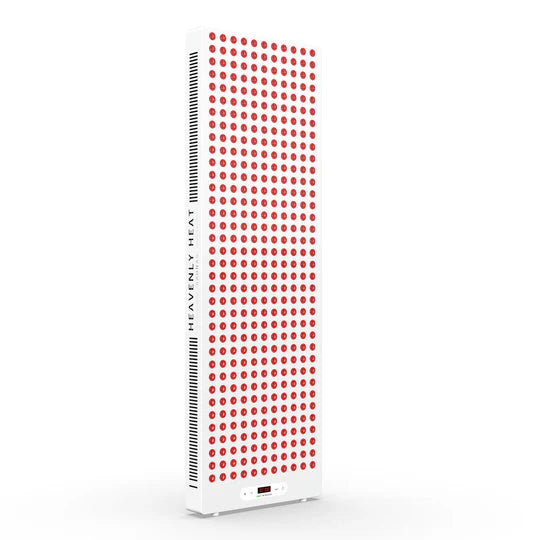How to Use a Sauna at the Gym: Benefits & Etiquette Tips

Table of contents
You step into the gym sauna, unsure of the rules. Should you bring a towel? How long should you stay?
Is there a right way to cool down? The confusion can make the experience more stressful than relaxing. Don’t worry! In this guide, you’ll learn exactly how to use a sauna the right way.
Key Takeaways
-
Hydrate Before and After: Drink plenty of water before entering and rehydrate after to avoid dehydration.
-
Follow Time Limits: Start with 10–15 minutes and never exceed 30 minutes to stay safe.
-
Respect Sauna Etiquette: Shower beforehand, sit on a towel, and keep noise to a minimum.
-
Cool Down Properly: Allow your body to adjust before showering or continuing your workout.
-
Dress Appropriately: Wear a towel or breathable clothing and avoid synthetic fabrics.
What Is a Sauna and How Does It Work?
- Using a sauna is about more than just sitting in a hot room: A sauna helps you relax, detox, and recover, but it’s not just about heat; it’s about how your body responds to it.
- Infrared saunas heat your body directly, not the air around you: “ Infrared saunas use light to warm you up gently from the inside, unlike traditional ones that heat the whole room,” says Dr. Brent A. Bauer , a renowned physician and director of the Mayo Clinic’s Complementary and Integrative Medicine Program.
- Traditional saunas give you dry heat using hot stones: These classic saunas heat the air, making the room feel dry and toasty, this is the type most people picture.
- The heat feels different depending on humidity: Dry saunas make you sweat slowly, while humid saunas make it feel hotter even if the temperature is the same.
- High humidity makes it harder for your sweat to cool you down: When it’s steamy, your body struggles to cool off because sweat doesn’t evaporate well, so the heat feels stronger.
- The heat improves blood flow but can leave you dehydrated: The warmth is great for circulation and easing tension, but sweating too much without water can make you feel weak or dizzy.
- People with heart conditions need to be careful with sauna use: Big jumps in body temperature can affect your blood pressure, so it’s best to talk to your doctor first.
- Most studies show that regular sauna use makes you feel better: Research over the years shows people often feel more relaxed and energized after using a sauna regularly.
- Spending too long in the sauna may affect men’s fertility: One study found that too much heat might lower sperm count for a while, but the effect was reversible.
- Experts agree the benefits are real, but we still need more research: While results look good, scientists are still figuring out the best way to use saunas for different people.
- Mariya Khan says sauna use should always start with safety: Mariya reminds everyone that saunas are not just about sweating, they’re about using them wisely and safely.
- Drink water before and after the sauna to avoid feeling sick: She says many people skip water and end up feeling bad, hydration is key to a good sauna experience.
- Always shower first and wear only a towel, not clothes: Mariya explains that being clean and using a towel helps keep the sauna hygienic and your skin safe.
- Saunas don’t help with weight loss the way people think: She clears up the myth—saunas might make you sweat, but that doesn’t mean you’re losing fat.
- Leave your phone outside and respect other people’s space: It’s not safe for your phone, and using it inside ruins the calm vibe for others, saunas should be a quiet zone.
- Knowing these simple tips helps you enjoy the sauna the right way: If you follow the basics, hydrate, dress right, be clean, you’ll get more from your sauna time and stay safe.
How to Prepare for a Sauna Session in gym?
Hydrate Well Before Your Session
Pre-Sauna Hydration: Key to Safe Experience
- Drink 16-20oz water, one hour prior.
- Limit caffeine: Prevents rapid fluid loss.
- Replenish electrolytes post-workout: Coconut water, milk, or DIY sports drinks.
- Monitor for dehydration: Dry mouth, fatigue, dark urine.
- Avoid Dehydration: Prevents Dizziness, Headaches, Fainting

Choose the Right Sauna Attire
- The right clothes help your body stay cool: Wearing proper attire in the sauna makes it easier for your body to handle the heat and stay at a safe temperature.
- Wearing the wrong outfit can make you overheat: Clothes that trap heat and stop sweat from evaporating can quickly lead to discomfort or overheating.
- What your clothes are made of really matters: Some fabrics make it easier for heat to escape, while others hold it in and make the sauna feel too intense.
- Light and breathable clothes are always better: Thin, airy materials let your body breathe and help you feel more relaxed during your sauna time.
- Avoid thick or synthetic fabrics that trap heat: Heavy or man-made materials don’t allow your skin to cool down and can make the sauna harder to tolerate .
- Loose clothing or just a towel keeps you comfortable: Wearing something loose or simply wrapping a towel around you gives your body space to breathe and keeps you feeling fresh.

Shower and Warm Up Your Body
- Taking a warm shower helps your body get ready for the heat: A quick rinse with warm water isn’t just about staying clean, it helps your body start adjusting to the sauna’s temperature. It opens up your pores and gets the sweating process started.
- Cold water can confuse your body before a sauna: Using cold water before your session can cause a sudden temperature shock, making it harder for your body to handle the heat once you're inside.
- Moving your body a little can stop you from feeling dizzy inside: Doing light stretches or simple movements like rolling your shoulders helps your blood start flowing. This gentle warm-up keeps you from feeling lightheaded when the sauna gets hotter.
Understand the Ideal Sauna Duration
- Starting with just 5 to 10 minutes is best when you’re new: If it’s your first time using a sauna, keeping it short, just 5 to 10 minutes, is the safest way to let your body get used to the heat.
- Staying in for 15 to 20 minutes is enough for most people: Once your body is used to it, 15 to 20 minutes is a good and safe sauna duration that works for most regular users.
- Going beyond 30 minutes can do more harm than good: Anything over 30 minutes can cause too much dehydration or overheating, so it’s not recommended even if you feel fine.
- If you have health issues, keep your session shorter: For people with heart problems, high blood pressure, or if you’re pregnant, shorter sauna sessions are safer, and it’s smart to check with your doctor first.
- Infrared saunas let you stay longer without stressing your body: Because infrared saunas use lower heat, they’re easier on your body, and you can usually stay in them for 20 to 45 minutes comfortably.
- Your body will tell you when it’s time to stop: After a hard workout or a long day, you may not need a long sauna session, if your body feels tired or stressed, cut it short.
- Leave the sauna right away if you feel dizzy or sick: Feeling dizzy, lightheaded, nauseous, or getting a headache means your body is overheating. Step out immediately to avoid serious health risks.

Practice Proper Breathing Techniques
- Breathing slowly through your nose helps your body stay calm: Taking deep, slow breaths through your nose keeps your heart rate steady and helps you feel more relaxed while sitting in the heat.
- Breathing out slowly through pursed lips stops you from feeling dizzy: Inhaling through your nose and exhaling slowly with your lips slightly closed helps your lungs work better and keeps your head clear in the sauna.
- Letting your belly rise when you breathe helps you take in more air: Using your belly to breathe, called diaphragmatic breathing, brings more oxygen into your body, which makes it easier to handle the heat for longer.
- Breathing too fast can make you feel lightheaded in the heat: Quick, shallow breaths can make you dizzy. Focusing on slow and steady breathing helps your body stay safe and comfortable inside the sauna.

Cool Down and Rehydrate Post-Session
After your sauna, let your body cool down before you shower. A cool shower feels great! Drink lots of water or an electrolyte drink.
And here's a little tip from me: "I've found that sitting quietly for a few minutes before hitting the showers makes a huge difference in how I feel afterward.
" It's like letting your body say, "Ahhh, that was nice!" Avoid coffee or alcohol right after, as they can make you even more dehydrated.
Follow Gym Sauna Etiquette
Before using the sauna, it's essential to shower. Showering helps remove sweat, dirt, and oils from your body, keeping the sauna clean for everyone.
Using soap is a good idea, as it clears bacteria and impurities that may otherwise stick to the sauna's heat.
A clean body also prevents body odor, ensuring you’re not just relaxing, but also respecting the hygiene of others.
Gym Sauna Etiquette: Do’s and Don’ts
Do’s
Shower Before Entering
Showering helps remove dirt and oils, ensuring the sauna remains clean for everyone. Using soap also removes bacteria, preventing body odor and maintaining hygiene.
Sit on a Towel
- Sitting on a towel keeps the sauna bench clean: Using a towel stops your sweat and oils from getting on the bench, which keeps things cleaner for everyone.
- A towel makes sitting in the sauna more comfortable: It gives you a soft, dry surface to sit on, instead of the hot, hard wood.
- A cotton towel works best for sauna use: Cotton absorbs sweat well, feels nice on the skin, and handles heat without trouble.
- Bringing your own towel feels better and cleaner: Using your own towel means it’s fresh, dry, and not used by anyone else, more comfort, less worry.
- Always spread the towel before sitting down: Laying your towel out fully before sitting keeps your area clean and helps you relax more easily.
Respect Personal Space
- Respecting space means leaving some room around you: When you sit in a gym sauna, don’t sit too close to others. Keep a bit of distance, especially in smaller saunas. It helps everyone feel more comfortable.
- Shifting slightly can show you need more space: If someone sits too close, try moving a little to create space. This small action can often let the other person know without saying anything.
- A polite sentence can set your boundary clearly: If moving doesn’t work, calmly say something like, “I just need a little more room, thanks.” This sets a boundary without being rude or causing tension.
- Waiting for a better spot is better than squeezing in: When it’s crowded, don’t force yourself into a tight space. Pick a seat with some breathing room, or wait until someone leaves.
- Entering and leaving slowly shows respect for others: When walking in or out of the sauna, be careful not to bump into people. Move gently so you don’t invade someone’s space by mistake.
Keep Noise to a Minimum
The sauna is a place of relaxation, so avoid loud conversations. If you need to speak, do so quietly, and leave your phone outside.
Stay Hydrated
- Drinking water before the sauna helps your body handle the heat: Hydration starts before you even step inside. Drinking water ahead of time prepares your body to sweat safely. Just don’t chug too much at once, or it can throw off your body’s balance and make you feel dizzy.
- Taking small sips inside keeps you steady: If you're spending more time in the sauna, light sipping is enough. It keeps your mouth from drying out and helps you stay comfortable without overloading your system.
- Replacing lost fluids after the sauna helps your body recover: Once you’re done, your body needs water to cool down and recover . Drink enough to replace what you lost through sweating, especially if you feel thirsty, tired, or lightheaded.
- Drinking the right amount of water makes sauna time safer: Not too little, not too much , keeping your water intake balanced before, during, and after makes the whole sauna experience safer and more enjoyable.
Follow Time Limits
- Staying too long in the sauna can hurt your health: It’s essential to follow time limits when using a sauna, as staying too long can be harmful to your health. The general guideline is to stay in for 15–20 minutes at a time, depending on how your body feels.
- If you're new to saunas, don’t try to sit too long: Beginners should start with shorter sessions and gradually increase the duration as they become more used to the heat.
- Leaving early is better than getting dizzy inside: Always listen to your body, if you start feeling dizzy, it’s time to leave.
- Use a timer so you don’t lose track of time: Keeping track of time can help you avoid overdoing it, so use a timer or keep an eye on the clock.
Wear Proper Attire
- Wearing the right clothes keeps your sauna time comfortable: When you're in a gym sauna, your comfort depends a lot on what you're wearing. Most places allow a towel or swimsuit, but it’s always safer to check what your gym allows.
- Clothes that trap sweat can ruin your sauna session: Avoid wearing swimwear made from synthetic materials like polyester. These fabrics trap sweat and bacteria, which can make your time in the sauna less relaxing and less clean.
- Light, breathable fabric makes a big difference: Choosing clothes made from cotton or linen helps your body breathe better in the heat. These fabrics soak up sweat and make your sauna experience feel more refreshing.
- A towel or robe is often the safest and cleanest choice: Wearing a towel or a simple robe is not only easy but also the cleanest option. It helps keep the sauna hygienic and is accepted in most gym rules.
- Knowing your gym’s rules helps you avoid awkward moments: Every gym has its own sauna policies. Checking the rules before you enter saves you from uncomfortable situations and keeps things respectful for everyone.
Don’ts:
Don’t Shave or Groom
Avoid shaving or grooming in the sauna, as the heat makes your skin more sensitive, increasing the chance of irritation, cuts, and discomfort.
With open pores, your skin is also more vulnerable to infections in the sauna’s warm, humid environment, which can trap bacteria and worsen irritation. Plus, it’s unhygienic for other users.
Don’t Use Strong Scents
Strong perfumes or oils can irritate your skin and respiratory system and disturb others. Keep scents minimal and natural.
Don’t Bring Electronics
- Bringing your phone inside can damage it: It might seem harmless, but the sauna's high heat can mess up your phone’s insides, breaking features or even ruining the battery.
- Using your phone ruins the relaxing vibe: Saunas are meant to be calm and quiet. Texting, scrolling, or chatting breaks that peaceful feeling for you and everyone else.
- Taking pictures or calls makes others uncomfortable: Snapping selfies or answering calls in the sauna is seen as disrespectful. People go there to relax, not to be part of someone else’s moment.
- Working out inside is risky, not smart: Trying to exercise in the sauna can cause you to sweat too much, lose fluids fast, and feel dizzy or weak. It’s unsafe for your body.
- Electronics don’t belong where it’s this hot: Phones and other gadgets can become unsafe in extreme heat. It’s better to leave them outside and enjoy the sauna the way it’s meant to be.
Don’t Exercise Inside
Avoid high-intensity exercise inside the sauna, as the heat can lead to dehydration and dizziness. Exercise before or after your session.
Don’t Engage in Loud Conversations
- Talking loudly makes others uncomfortable: The sauna is a place for peace and quiet, not loud discussions. Loud conversations can make the experience uncomfortable for everyone around you.
- Even small talk can ruin the calm vibe: Keep your voice low, or better yet, enjoy the calming solitude. Even soft chatter can break the peaceful atmosphere.
- If you really need to talk, speak softly: If you need to talk, make sure it’s at a respectful volume, keeping in mind the relaxing environment everyone seeks.
- Phone calls don’t belong in the sauna: It’s also important to avoid taking phone calls, which can disturb the serene atmosphere.
- Staying quiet helps everyone enjoy the sauna: Be mindful of those around you and enjoy the silence to enhance everyone’s sauna experience.
Don’t Stay Too Long
Avoid staying too long in the sauna, 15-20 minutes is generally ideal. Step out if you start feeling uncomfortable or dizzy.
If you start sweating heavily, feeling lightheaded, or notice muscle cramps creeping in, these could be early signs of heat exhaustion. Pay attention to how you feel and cool down before it gets worse.
Don’t Leave Sweat Behind
- Always Wipe the Sweat: Leaving sweat behind on sauna benches is both inconsiderate and unhygienic. After your session, take a moment to wipe down the bench and any surfaces you’ve used.
- Sit on a Towel to Keep it Clean: Using a towel underneath you prevents sweat from soaking directly into the wooden bench, keeping the sauna more sanitary for everyone.
- A Quick Clean Makes a Big Difference: Taking a few seconds to clean up after yourself helps maintain a clean and pleasant sauna experience for the next person.
- Sweat Carries Bacteria, Don’t Leave it Behind: Sweat can carry bacteria, so wiping down after your sauna visit helps protect others and supports a safer, healthier environment.
Should You Use the Sauna Before or After a Workout?
- Using the sauna before a workout can make your body feel ready: A short sauna session before exercise warms up your muscles, increases blood flow, and improves flexibility. This helps you move better during your workout and can reduce the risk of injury.
- Starting with the sauna might leave you tired during exercise: If you spend time in the sauna before working out, you may lose fluids through sweat. This can lead to dehydration, which may affect your strength and stamina during the workout.
- The sauna after your workout helps your muscles recover faster: Using the sauna after training increases blood flow, which helps your muscles relax and recover. It can also reduce soreness and stiffness after lifting weights or running.
- Doing cardio? It’s better to use the sauna after, not before: Going into the sauna before cardio can wear you out early. Saving it for after your run or cycling session helps avoid mid-workout fatigue and supports better recovery.
- Weightlifters feel less muscle tightness when they use the sauna after lifting: If you’re lifting heavy, the heat from the sauna can loosen tight muscles and ease tension once you’re done. This can make recovery smoother and more comfortable.
- No matter when you use it, drink water to stay safe and get results: Whether you go into the sauna before or after working out, staying hydrated is very important. Drinking enough water helps your body handle the heat and makes the sauna more effective.
How Long Should You Stay in a Sauna?
- Staying too long in the sauna can make you feel dizzy: Beginners should start with 10 to 15 minutes only. Spending more time can lead to dehydration or feeling lightheaded , especially if your body isn’t used to the heat.
- Regular sauna users can handle a bit more time: If you’ve used saunas before, you might manage 20 to 30 minutes safely. But staying beyond that can become too much for the body to handle.
- Listen to your body and leave if you feel unwell: Feeling lightheaded, nauseous, or very tired ? That’s your body telling you to step out right away . Ignoring these signs can lead to serious health risks.
- Different saunas mean different safe times: Traditional saunas use high dry heat, so shorter sessions are better . Infrared saunas are milder, so you can stay a little longer without overheating.
- Drinking water before and after keeps you safe: Hydrating before and after your sauna session helps prevent dizziness, fatigue, or overheating . Don’t skip this step.
- First-timers should never go beyond 15 minutes: If it’s your first sauna session , don’t stay longer than 15 minutes . Your body needs time to adjust, and this keeps things safe and comfortable.
Sauna Safety Tips and Health Precautions
Stay Hydrated
Sweating helps detoxify the body, but without enough fluids, it can lead to dehydration.
Drink at least 16 ounces of water before your session. If you feel dizzy, it's a sign you need to hydrate.
After your session, rehydrate with water or an electrolyte drink to replenish lost minerals.
Entering a sauna dehydrated can strain your heart and cause overheating, making hydration essential.
Limit Your Time in the Sauna
Most people should limit their time to 15-20 minutes to prevent dehydration and dizziness.
If you feel lightheaded, leave immediately. Excessive exposure can overheat the body and increase the risk of heat exhaustion. Listen to your body’s cues and step out when necessary.
Listen to Your Body
A sauna session should be relaxing. If you experience discomfort, fatigue, or dizziness, exit immediately.
Ignoring these signs can lead to heat exhaustion. If you feel lightheaded, sit down and breathe deeply. Everyone has a different heat tolerance, so focus on your own limits.
Be Mindful of Temperature and Humidity
Sauna temperatures range between 150°F and 190°F. Higher humidity intensifies the heat, making breathing difficult for some.
If the air feels too thick, step out and cool down. Hydration is key when dealing with high temperatures. Some saunas allow humidity control, adjust it sparingly for comfort.
Avoid Saunas If You Have Certain Health Conditions
If you have heart disease, high blood pressure, or respiratory conditions, sauna heat may pose risks.
Pregnant women should avoid saunas, as overheating can affect fetal development.
Those with diabetes may experience blood sugar fluctuations. Always consult a doctor if you have medical concerns.
Cool Down Properly
Your body needs time to return to normal temperature after a sauna session. Step into a cooler area and relax before taking a shower.
Start with lukewarm water before gradually making it colder to prevent shocking your system. Proper cooldown prevents dizziness and nausea.
Do Not Use a Sauna Under the Influence
Alcohol and saunas don’t mix. Drinking before or during a sauna session can increase dehydration and impair judgment.
Alcohol also affects body temperature regulation, raising the risk of overheating. Stay sober to ensure a safe experience.
Why Hydration Matters for Sauna Use?
Preventing Dehydration and Overheating
Sauna heat speeds up fluid loss through sweating. Dehydration can lead to dizziness, fatigue, and heat exhaustion.
Drink at least 16–20 ounces of water before your session. If you feel weak or nauseous, step out immediately. Hydrate before and after to stay safe.
Optimizing Sweat and Detoxification
Hydration is key to effective detoxification. If dehydrated, your body struggles to sweat, limiting toxin release.
Electrolytes help replenish lost minerals. Rehydrate after your session with water or an electrolyte drink to support your body's detox process.
Enhancing Circulation and Cardiovascular Function
Sauna heat expands blood vessels, improving circulation and mimicking mild cardiovascular exercise.
It may help lower blood pressure over time. However, dehydration can impair these benefits. Drink enough water before and after to maintain proper circulation.
Supporting Muscle Recovery and Performance
Athletes use saunas for muscle recovery, but dehydration can worsen muscle fatigue.
Drinking water before your session prepares your muscles, while replenishing electrolytes afterward supports recovery. Sweat depletes sodium and magnesium, which are essential for muscle function.
Improving Skin Health and Hydration Balance
Regular sauna use helps clear pores but can dry out skin. Hydrate before and after your session.
Use a lightweight moisturizer post-sauna to lock in moisture. Electrolyte-rich drinks also support skin hydration from within.
Avoiding Dizziness and Fatigue in the Sauna
Feeling lightheaded often signals dehydration. Drink water consistently throughout the day, not just before entering.
If you feel faint, step out and cool down. Electrolyte drinks help maintain fluid balance and prevent dizziness.
Maximizing the Benefits of Heat Therapy
Without enough hydration, your body struggles to regulate temperature and flush out toxins.
Aim for at least 16 ounces of water before your session. Watch for signs of dehydration like headache and extreme thirst. Rehydrate promptly after sweating.
How to Cool Down Properly After a Sauna Session?
- Your body needs a few calm minutes in cooler air first: Cooling down properly after a sauna session keeps your body balanced. Step into a cooler area and let your body adjust before taking a shower.
- Lukewarm water helps your body adjust without a shock: Start with lukewarm water and gradually lower the temperature. Jumping straight into cold water can shock your system, making you feel lightheaded or dizzy, especially if your body is overheated.
- Letting your body cool down naturally avoids discomfort: Letting your temperature drop naturally helps prevent discomfort. Outdoor air can also help regulate body heat.
- Giving yourself 10–15 minutes makes cooling down safer: Give yourself at least 10–15 minutes to cool down before easing into a refreshing cold shower.
FAQs
Can You Use the Sauna If You’re Feeling Sick?
If you have a fever, the heat may worsen your condition. A sauna can help with mild congestion by loosening mucus, but if you feel weak, it’s best to rest. If you’re contagious, avoid the sauna to prevent spreading germs.
What Should You Do If You Feel Lightheaded in the Sauna?
If you feel dizzy, leave immediately and cool down. Drink water, sit in a relaxed position, and take deep breaths. Hydration helps prevent dizziness. If you feel faint, resting and hydrating should help you recover within minutes.
Is It Okay to Use Essential Oils for Aromatherapy in a Gym Sauna?
Some gyms allow essential oils, but many prohibit them. Check your gym’s policy before using oils. In a hot sauna, oils can become too strong, causing headaches or breathing issues for others. Always ask before using oils in a shared space.
How Can You Maximize Sauna Benefits for Muscle Recovery?
To enhance muscle recovery, stay in the sauna for 10 to 20 minutes after your workout. Keep the temperature between 160°F and 190°F. Using contrast therapy—switching between heat and cold—improves blood flow and reduces inflammation.


